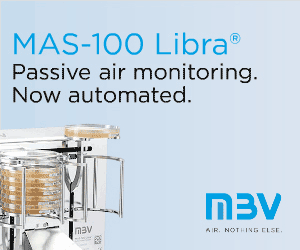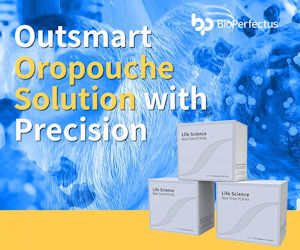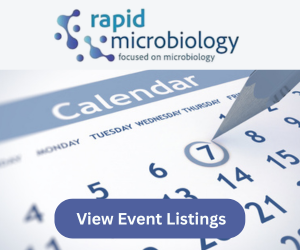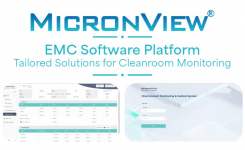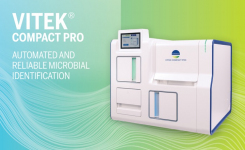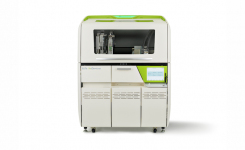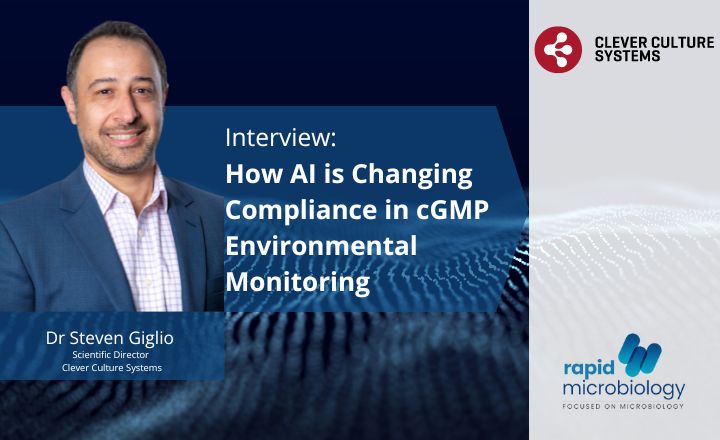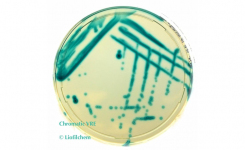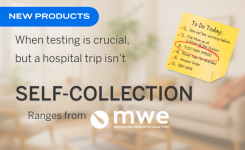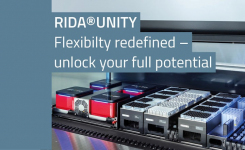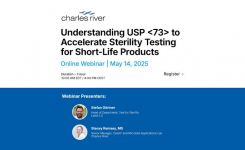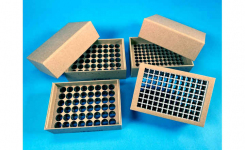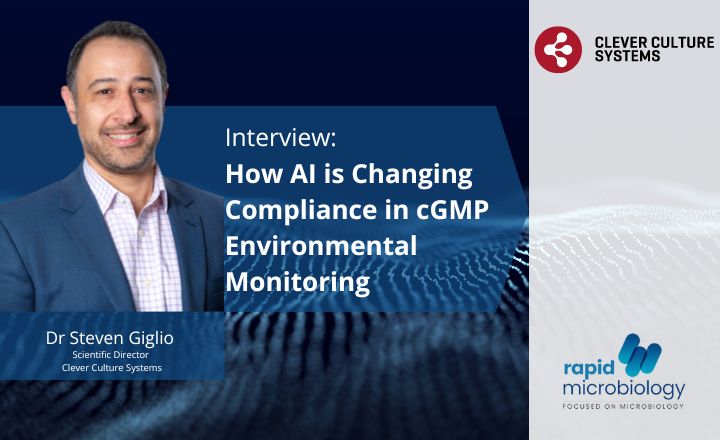
Key points
- An effective environmental monitoring program is a regulatory requirement for manufacturers in the pharmaceutical and healthcare sectors
- All microbial isolates from manufacturing facilities should be identified at least to genus level and in more detail when necessary
- Genotypic microbial identification methods are now preferred, but traditional phenotypic identification may be sufficient for routine use in smaller labs
- Outsourcing of microbial identification can be a cost effective way to access the latest methods and manage environmental monitoring data
Overview of environmental monitoring programs
 Control of microbial contamination is an important activity right across the healthcare industry, but for pharmaceutical manufacturers operating cleanrooms and other controlled environments it is critical. One of the cornerstones of microbiological control in aseptic processing is the establishment of an effective environmental monitoring (EM) programme. Indeed, an EM programme is generally a regulatory requirement for manufacturers. For example, compliance with United States Pharmacopoeia (USP) chapter on "Pharmaceutical Compounding – Sterile Preparations" means developing a written EM program that meets the necessary standards.
Control of microbial contamination is an important activity right across the healthcare industry, but for pharmaceutical manufacturers operating cleanrooms and other controlled environments it is critical. One of the cornerstones of microbiological control in aseptic processing is the establishment of an effective environmental monitoring (EM) programme. Indeed, an EM programme is generally a regulatory requirement for manufacturers. For example, compliance with United States Pharmacopoeia (USP) chapter on "Pharmaceutical Compounding – Sterile Preparations" means developing a written EM program that meets the necessary standards.
The main purpose of the EM program is to provide information about the microbiological quality of the aseptic manufacturing environment and the degree of control provided by cleaning and sanitising regimes, work practices and the design and engineering of the facility. Without the data that an EM program provides it is impossible to verify that an aseptic environment is under proper control. The aim of the EM program is to demonstrate that the facility can consistently deliver an environment where acceptable levels of microorganisms are maintained during production. In addition, the data generated by the program should provide a detailed understanding of the microbial ecology of the manufacturing environment and establish a baseline level for the typical microbial population. This information can then be used to set alert and action levels when deviations occur. The program data should also be able to reveal trends within microbial populations and help to track those trends back to their source. This aspect of EM is very important in providing early warning of potential contamination problems from equipment failure, inadequate cleaning, or deficiencies in staff hygiene training, so that they can be corrected before the end product is compromised.
There is a great deal of official guidance available to help manufacturers develop appropriate EM programs. The FDA has published guidance for the production of sterile drugs by aseptic processing that includes a section on EM programs and USP general information chapter "Microbiological Control and Monitoring of Aseptic Processing Environments" also contains detailed information. In general, EM for microorganisms may utilise three different types of sampling:
- Passive air sampling using settle plates etc.
- Active air sampling with purpose built microbiological air samplers
- Sampling of surfaces using contact plates and swabs
The number and location of sampling sites is likely to depend very much on the nature of the facility and the operations carried out within it. Both need to be carefully considered to develop a sampling plan that can monitor the most likely points of microbial entry, places where microorganisms may multiply or be easily spread to other locations and items of equipment that are difficult to clean. Over time the EM program will build up an archive of data that can be invaluable in providing a detailed picture of the microbial populations in and around the facility and data that can often be usefully correlated with other events in the manufacturing environment.
Microbial identification
The value of the data from an EM program is greatly reduced if the microorganisms isolated are not characterised to some degree. Identification of isolates is an essential part of understanding the microbial ecology of a manufacturing facility, monitoring the effectiveness of microbial control in aseptic environments and investigating excursions from normal microbial populations or sterility failures. This is widely recognised by regulatory authorities and USP chapter recommends that microbial isolates should be identified "at a rate sufficient to support the environmental monitoring program." The level of identification required depends on the nature of the operation and the location from which the isolate was recovered. For example, for non-sterile class D/ISO 8 manufacturing or ancillary areas it may be sufficient to identify isolates to genus level on a routine basis. But identification of the species is necessary when abnormally high levels of microorganisms are recovered, or for isolates from more critical areas. Microbes isolated from aseptic processing areas often need to be characterised in more detail and may require identification to strain level. Indeed it may be a regulatory requirement to identify isolates to strain level when investigating microbial excursions or sterility failures.
Both phenotypic and genotypic features may be used to identify microbial isolates. USP chapter "Microbial Characterization, Identification and Strain Typing" sets out the range of methods that can be used and gives details of their applications and verification. Many laboratories still rely on traditional phenotypic identification schemes. Characteristics such as colony morphology, cellular morphology, Gram reaction and the presence, or absence, of endospores remain important in identification to genus level, while additional biochemical and physiological tests may often be able to differentiate to species level. Commercial identification systems have been developed by grouping together traditional biochemical tests in easy-to-use kits. The results provided by each isolate can then be compared against a database to provide an identification. Examples include the API system developed by bioMérieux and the Biolog Microbial ID system using a 96-well microplate format. In some cases these systems can also be automated to handle larger numbers of isolates. Other phenotypic identification schemes have been developed using other microbial cell characteristics. Examples include gas chromatography analysis of extracted cellular fatty acids and fatty acid methyl esters (FAMEs) and protein analysis using Matrix-Assisted Laser Desorption Ionization-Time of Flight (MALDI-TOF) mass spectrometry. Both of these systems have been developed into commercial products for the pharmaceutical industry and are supported by extensive profile databases and software. They have the advantage of speed over culture-based methods, but may require considerable initial investment and extensive validation before use.
Genotypic methods are becoming more widely used, especially when identification to strain level is required during investigation work. The FDA now advocates the use of genotypic identification for such applications because it is inherently more accurate and precise than phenotypic identification. A number of commercial genotypic microbial identification systems have been developed and several are suitable for use by pharmaceutical laboratories. Most rely on polymerase chain reaction (PCR) technology to amplify target sequences of the bacterial genome, which can then be detected. Examples include ribotyping, in which relatively the stable 16S rRNA gene is fragmented and fluorescently labelled to provide a fingerprint for each isolate, sequencing of the 16S rRNA gene and systems based on PCR amplification of non-coding repetitive sequences in the bacterial genome. Ribotyping has been commercialised as the Hygiena RiboPrinter®, while PCR-based systems are available from bioMérieux (DiversiLab®) and Life Technologies™ (the MicroSEQ® Rapid Microbial Identification System). Other methods are in development but are not yet widely available for use in the pharmaceutical laboratory, although specialist typing labs may have access to a wider range of methods.
Choosing identification methods
The regulatory and operational importance of microbial identification and the range of methods now available can make it very difficult for a pharmaceutical laboratory to decide which system to use. The choice will vary according to size of the lab and the type and number of samples it has to process and there are a number of factors that should be taken into account in the decision making process. Costs - not only initial investment, but also validation and maintenance costs and the price of consumables - are clearly important, but so is the need for skilled staff and adequate laboratory space and resources. Expected sample throughput is a key factor, as is the time taken to obtain results and compatibility with existing methods in the lab. It is also important to ensure that any identification system is backed up by an extensive and relevant profile database. An isolate can only be identified if there is a close match in the system database and inadequate database support can mean an unacceptable number of unidentified isolates. Most important of all is to ensure that the methods chosen are a close match for the laboratory's needs. For example, if most identifications only need to be to genus level, there is little point in investing in an expensive automated genotyping system that can identify individual strains.
For smaller laboratories, the growing support for genotypic identification systems by the regulatory authorities presents something of a problem. Such labs may be able to manage perfectly well on a day-to-day basis with simple traditional methods and the adoption of new technology may be prohibitively expensive and problematic. Nevertheless, for investigational work it may be necessary to identify isolates in much more detail than can be achieved by traditional methods. In these cases a solution may be to outsource testing to a specialist laboratory. A number of commercial labs now offer identification services using a variety of phenotypic and genotypic methods, including MALDI-TOF and DNA sequencing. Examples include Charles River's Accugenix® Microbial ID & Strain Typing and the microbial identification service provided by the NCIMB culture collection. These specialist laboratory services are able to offer access to a range of methods that may be beyond the reach of all but the largest pharmaceutical labs and represent a cost effective option for non-routine microbial identification.
Tracking and trending
An EM program that includes accurate identification of all isolates will quickly build up an archive of historical data that can be of great value, but only if it is analysed effectively by tracking and trending microbial populations. Having a detailed record of the numbers and species of bacteria and fungi isolated at different locations and times can quickly reveal changes and give early warning of developing problems or system failures. For example, if abnormal levels of a specific bacterial species are isolated in critical areas, it is often possible to track the same species to less strictly controlled areas and establish their source. Analysis of the data can even indicate the route by which contamination may be occurring, allowing control to be regained before a critical excursion occurs. Similarly, tracking and trending species associated with personnel may identify inadequate hygiene procedures at an early stage. In short, tracking and trending is vital for the pharmaceutical microbiologist to obtain a detailed microbial picture of the manufacturing facility and demonstrate the degree of control that exists. Any deviations from that picture are then very quickly apparent.
Clearly the analysis of large amounts of data is time consuming and picking out trends from the 'background noise' can be difficult. Modern IT solutions can be a considerable help by presenting and analysing the data in clearer formats that highlight abnormalities. Commercial software for tracking and trending is available for this purpose. One example is the Charles River Accugenix Customer Portal, an online complimentary service that allows customers to track and trend the results obtained from submitted samples. Microbial isolates can be tracked by various characteristics or by species and trending reports can be generated in a number of user-friendly formats including graphic charts and spreadsheets. Reports can be kept in an archive for up to seven years. Advances in software for data analysis have already made searching for trends in microbial populations easier and are likely to improve still further in terms of sensitivity and ability to detect patterns.


